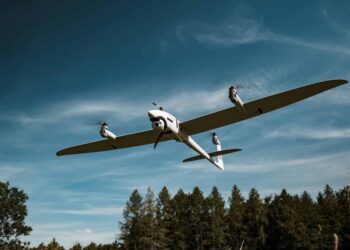US Navy , NAVAIR PATUXENT RIVER: The H-1 Upgrades Program, which is replacing aging Marine Corps UH-1N and AH-1W aircraft with upgraded and 84-percent identical UH-1Y and AH-1Z aircraft, completed developmental testing Feb. 17.
Currently, the program is preparing to enter Operational Evaluation as well as to start a third Low-Rate Initial Production lot.
Two of the five developmental test aircraft have already been transferred to the operational test squadron and are being used to train the Marines who will conduct the operational evaluation. Two aircraft are in final preparation to be transferred to the operational test squadron.
The first H-1 to fly in the upgraded configuration, AH-1Z-1, is currently preparing for live-fire testing at the Naval Air Warfare Center, China Lake, California.
Bell Helicopter, the manufacturer of the aircraft, has 16 aircraft on two firm fixed price Low-Rate Initial production contracts worth $185.6 million and $111.4 million respectively. Seven aircraft are already in assembly in Amarillo, Texas.
Since the first AH-1Z made its maiden flight Dec. 7, 2000, the five aircraft assigned to the H-1 Upgrades program here, tallied a total of 3,324 flight test hours and 3,048 test sorties in the development test and qualification of the AH-1Z and UH-1Y. The aircraft also have fired more than 2,000 2.75-inch rockets, 13,662 rounds of machine gun and automatic cannon ammunition, 11 Hellfire anti-armor missiles and three AIM-9 Sidewinder air-to-air missiles.
To date, the H-1 Operational Test Team has put a total of 156.6 flight hours on the aircraft in 92 sorties.
The AH-1Z Viper and UH-1Y Venom are slated to replace the current fleet of AH-1W and UH-1N aircraft which have been operating at sea with the Marine Corps for many years. The H-1 program provides over 80 percent parts commonality for the two aircraft.
A change to the program that will build UH-1Ys completely new, rather than remanufacturing them from aging UH-1N's, was approved by the Defense Department's acquisition chief in April 2005. The first new build UH-1Ys will start production in 2006 as part of the third lot of low-rate initial production aircraft. First deliveries of the new aircraft are scheduled to begin in 2008.
“The program has changed significantly since its inception to significantly enhance the performance and operational effectiveness of the aircraft beyond the original requirement,” said Col. Keith Birkholz, the H-1 program manager. “The original program approved by Undersecretary of Defense Kaminski in 1996 provided for upgrades to the aging UH-1N (Huey) and AH-1W (Super Cobra) rotor, transmission, and tail systems, along with an AH-1W cockpit upgrade (the AH-1W suffers from having a very high pilot workload).
“The current program provides for a common cockpit upgrade for both aircraft,” he added, “significantly improved reliability, maintainability, and supportability, training systems compatible with the USMC training vision, along with significant improvements to performance/payload/warfighting capability – well beyond original expectations.”
The resulting systems provide more capability and lower lifecycle costs than was expected from the program at its inception in FY96.
“Developing and incorporating these new technologies will ultimately provide the Marines with a more capable, survivable and lethal system that's a vast leap in capability beyond the aging platforms they currently operate, and with greatly reduced total lifecycle costs,” said Birkholz.
Among the new technologies adding capability to the aircraft is the Thales-supplied Helmet Mounted Sight and Display system.
“The helmet mounted sight and display is cutting edge technology in the rotary wing environment and we are the first to attempt full integration of it into an attack platform,” Birkholz explained. “The Top Owl was an 'off-the-shelf” option chosen by every pilot who participated in the comparison testing/trade study in 2001. We plan to optimize the Top Owl display module system to meet unique requirements of Marine Corps missions and employment without any changes to the aircraft interfaces, helmet tracker or software.”
Thales recently received a contract to optimize Top Owl optics and displays for the USMC mission, according to Birkholz. Program officials expect to be ready to field the optimized Top Owl concurrent with the UH-1Y fleet introduction scheduled for FY08.
“Modifications we are making to the helmet will incorporate alternative night vision concepts based on existing and proven technology while retaining the extensive integration of the Top Owl system already completed,” Birkholz added.
PMA-276 and the H-1 Integrated Test Team now have more Top Owl time than any other user.
By 2018, the Marine Corps will have procured 100 UH-1Y Venoms and 180 AH-1Z Vipers.
Germany says adding explosive drones to weapons arsenal
Germany said Friday it would buy explosive drones for the first time as Berlin boosts investments in its armed forces...









